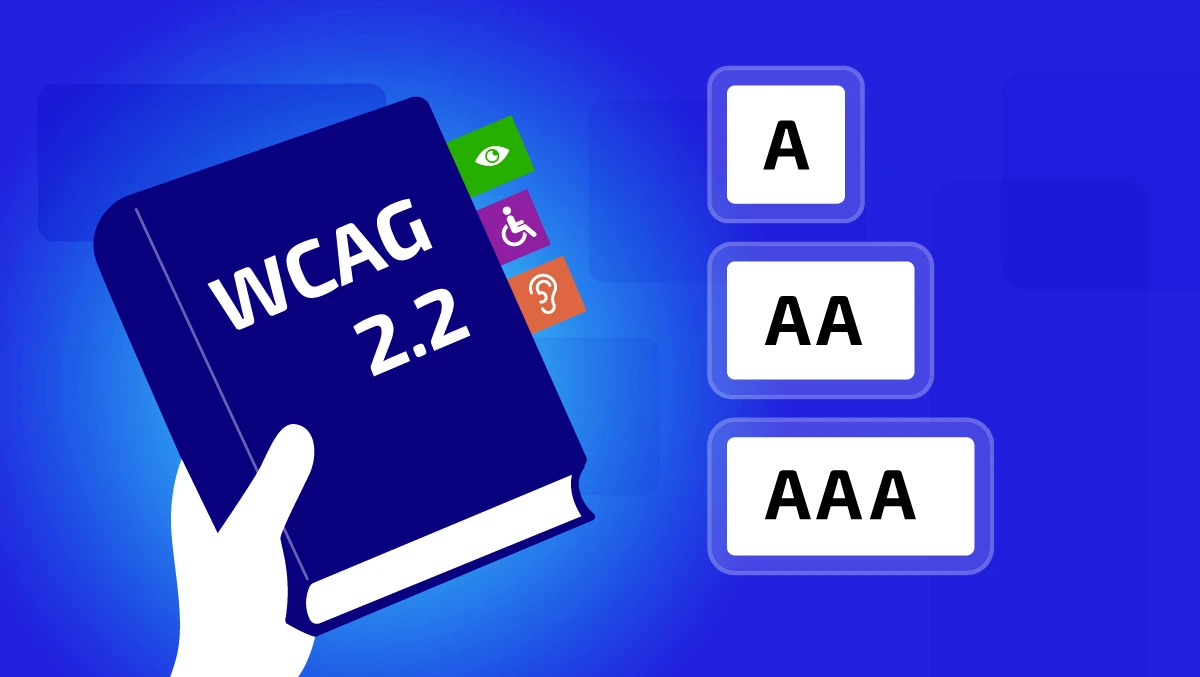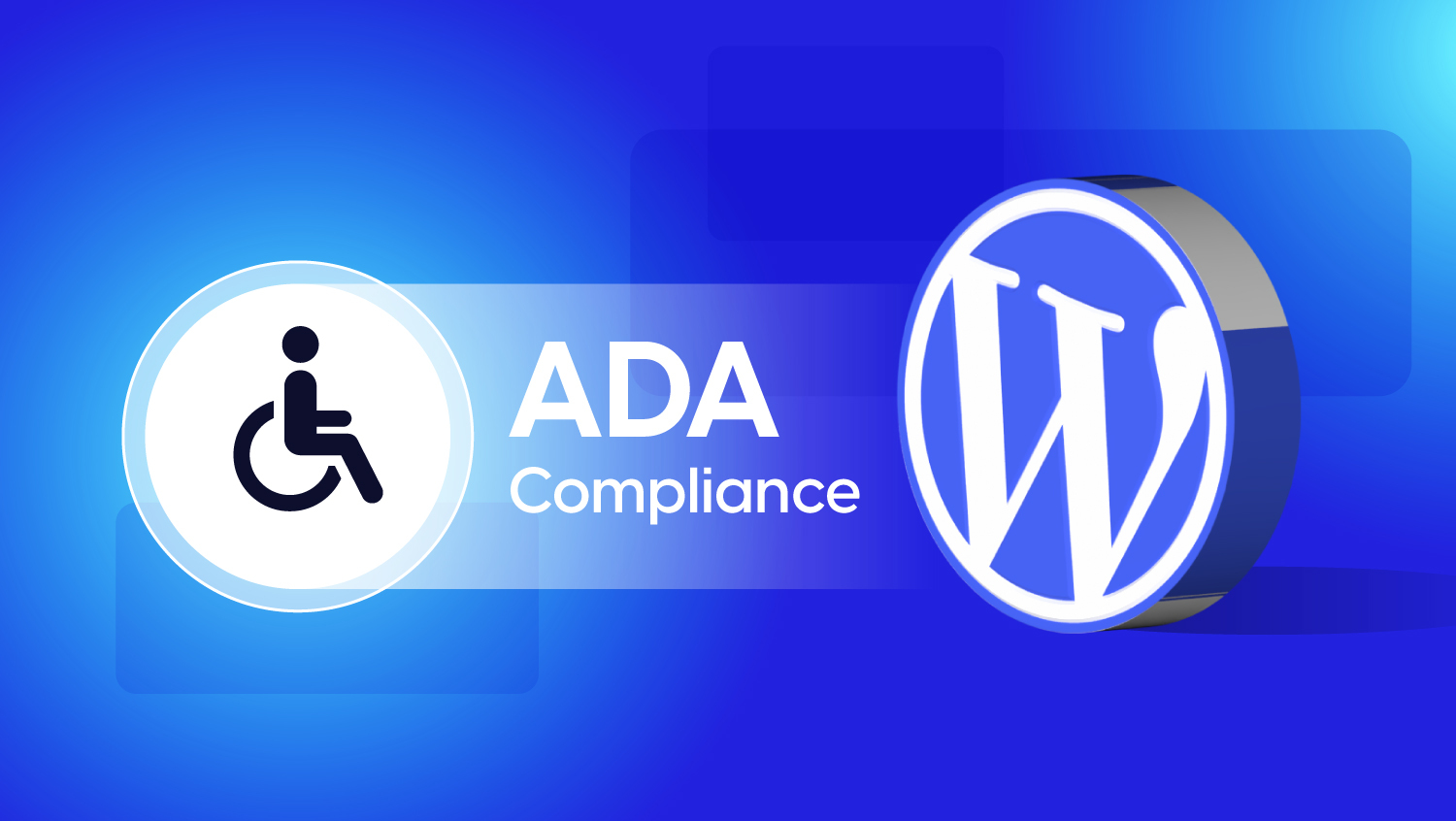ADA: Advanced Guide to Accessibility and Design

What is the ADA and Why It Matters for Your Website
The Americans with Disabilities Act (ADA) is a historic civil rights law that was enacted in the U.S. in 1990. The ADA guarantees equal access and protection from discrimination for people with disabilities in employment, transportation, public accommodations, and communications.
Today that protection extends into the digital world. The U.S. Department of Justice (DOJ) has clarified that websites are defined as "places of public accommodation" under Title III of the ADA. What does this mean? If you serve the public through your website, even if you are solely an online business, you must provide access to the public.
Why is this so important right now? Based on data from the CDC, 1 in 4 adults in the U.S. lives with a disability. That is more than 61 million people who, if your website is not accessible, can be denied access to your content, services, or products that you are providing.
Curious to know how accessible your website is in comparison to current accessibility laws? Check out our Compliance Hub which explains everything required to keep current with rapidly changing standards.
ADA Compliance Criteria: What Your Website Must Meet
The ADA itself does not list technical specifications for websites.Nevertheless, DOJ and accessibility lawsuits continue to cite WCAG standards published by the World Wide Web Consortium (W3C).
As of today, WCAG 2.2 is the latest version, published in 2023, that anymore standards describe mobile users and individuals with cognitive disabilities (W3C, 2023).
These are the WCAG principles that your website should follow:
- Perceivable: Is it easy for your users to see or hear your web site content? This actually includes having alt text for images and proper labels for forms.
- Operable: Is it easy for your users to navigate your site? Can they utilize a keyboard, screen reader or other tools?
- Understandable: Are your menus, buttons and forms easy to understand and use?
- Robust: Does your site work with a wide variety of assistive technologies and browsers?
Compliance with accessibility is not only important. It also increases your sites usability for all users. Research states that increasing overall usability of accessible websites can reduce bounce rates and ecommerce conversion by 20% (Forrester, 2022).
You can start with the audit via our Access AI Audit tool. It would identify the issues throughout your site and give recommendations for changing things based on WCAG and ADA standards.
If you would like help from professionals, the Access Services now combines AI tools with expert manual testing to maintain your website in compliance.
The Real Reasons ADA Compliance is a Must
ADA compliance is not simply a legal obligation, but rather an opportunity to establish inclusion and a better user experience. An accessible website allows those with disabilities to navigate, comprehend and engage with your content.
There are business case reasons as well. A 2023 report from the Return on Disability Group, identified that companies investing in accessibility increased revenue by 28% over competitors. Inclusion increases engagement, loyalty, and growth.
There can be consequences to non-compliance such as litigation, financial penalties, and reputational damage. More than 4,000 web accessibility lawsuits were filed in federal court in 2023 alone.
Accessibility is also good SEO. Search engines favor structured content, alt text, and clean navigation, all of which you develop as part of your WCAG compliance.
ADA Website Accessibility: What You Need to Know
ADA website accessibility entails that digital content, tools, and services must be usable be people with disabilities including individuals who are blind, deaf, have motor disabilities and cognitive disabilities.
The important standards are the WCAG (Web Content Accessibility Guidelines) standards which cover anything from color contrast, keyboard navigation, format access through screen readers and form labels.
In 2022, the DOJ provided guidance that the ADA rules apply to public and private websites, meaning they expect all businesses that sell goods and services online to comply.
Accessible websites offer better usability for all users. For example, headings and buttons that are clear provide usability for users on smaller screens. Keyboard navigation compatiblity also provides help to mobile users or users with temporary inuries.
The Access Monitor can provide ongoing usability tracking of the compliance being performed and look for issues before they turn into problems.
Understanding the 5 Titles of the ADA
The ADA is structured into five key titles that define where and how accessibility is required. Each title serves a different part of society, but together they ensure equal access to daily life.
Title I: Employment
This title protects people with disabilities in the workplace. It requires employers with 15 or more employees to offer equal job opportunities. Accommodations may include screen reader software, physical accessibility, or flexible work schedules.
Title II: Public Services
Title II applies to services and programs run by state and local governments. These services must be accessible to everyone. This includes websites for public departments where users may apply for licenses, pay taxes, or access community information.
Title III: Public Accommodations
This is the most relevant section for private businesses. Title III covers all public-facing entities, including stores, banks, hotels, and their websites. Your website is considered a public accommodation if it helps people access your business.
Title IV: Telecommunications
This title ensures communication access for individuals with speech or hearing impairments. It led to technologies like TTY, relay services, and captioning tools for online and televised content. Telecom companies must make these services available.
Title V: Miscellaneous Provisions
The final title ties everything together. It includes definitions, legal protections, and enforcement guidelines. It also protects people from retaliation if they assert their rights under the ADA.
Why Title III Matters Most for Websites
If your business has a digital presence, Title III directly applies to you. Websites that are not accessible to users with disabilities can face lawsuits and lose potential customers. Accessibility helps you stay compliant and inclusive.
For example, an online store that cannot be navigated with a keyboard or lacks alt text could prevent users with visual or motor disabilities from completing a purchase. Fixing these issues helps your business grow while staying legally safe.
What Happens If You Ignore ADA Compliance
Ignoring ADA compliance is risky. It puts your business at legal, financial, and reputational risk. In 2023 alone, over 4,600 ADA website lawsuits were filed in the U.S. Most were against retail, hospitality, and education brands.
Fines for non-compliance can range from $75,000 for a first offense to $150,000 for subsequent violations. But it’s not just about money.
Lawsuits damage public trust. They send the message that your business excludes people with disabilities. Even if you settle privately, the negative press can cost far more than compliance ever would.
Must-Have Design Features for an ADA-Compliant Website
An ADA compliant website should be usable for everyone with any level of ability. Below are some crucial design factors that are in accordance with the WCAG 2.1 guidelines and provide better usability for all:
Descriptive alt text for all images
All images should always include alt text that explains the purpose of the image, not just the appearance of the image.
Easy keyboard navigation
Users should be able to navigate the site using only their keyboard. This is helpful for users with motor disabilities, but also for users who are utilizing assistive tool like a screen reader.
Logical heading structure
Content should utilize a logical hierarchy (H1, H2, H3) to allow screen readers to know how it was structured.
Heightened color contrast
Text should be easily read by the user. For example, black text on a white background passes the 4.5:1 suggested ratio from WCAG.
Accessible forms
Form fields should have a clearly visible label, and error messages should be easy to identify and comprehend.
Closed captions for video
Closed captions are helpful for individuals who are deaf or hard of hearing, and also provide helpful usability for users in sound-off settings.
To make this easier, our Access Accy widget supports many of these features out of the box, while still letting you fully customize the experience.
7 ADA Compliance Tips to Make Your Website Accessible
Here’s a helpful checklist to help you make sure your site is ADA compliant:
- Include descriptive alt text to images
This is helpful for users who are visually impaired and for SEO. - Use navigational elements that are clear and consistent
Users should be able to predict where the Menu is on all pages. - Ensure screen reader accessible
Use ARIA Labels and semantic HTML for screen readers to interpret your content. - screen background color
Definitions: Aim for a minimum of 4.5:1 for normal text and 3:1 for large text. - If you include audio & video, include text transcripts
Transcripts make multimedia accessible for users who are hard of hearing, or visually impaired. - Confirm you can do everything with just the keyboard
Users should be able to implement and complete forms, open menus and navigate without the use of a mouse or trackpad. - Continuously run automated audits to find new problems
Tools like Access Monitor are helpful to frequently scan for new issues and to track after improvements.
As a best practice, simply combining the two considerations above, the original principles create the greatest freedom. Such as any accessible online content, although if you're doing nothing else don't forget about these two principles.
Accessibility will always be a continuous effort. You will need to periodically check the site, for not only accessibility materials, tools, and checklists, but also to remain updated! You are welcome to bookmark our Help Center since it will give you the the tools necessary.
Remember, accessibility is not a one-time fix. It’s a continuous effort. Bookmark our Help Center for tools, checklists, and updates.
Legal Risks of Non-Compliance: What’s at Stake
ADA non-compliance is more than just bad User Experience, it's also a legal liability. Title III of the ADA does include websites and covers businesses who serve the public in the United States. If they are found to be inaccessible that may disclose a discriminatory practice.
Thousands of lawsuits proliferate every year. In 2023, UsableNet recorded more than 4,600 digital accessibility lawsuits. Many of those lawsuits had to do with websites denying access to users who have disabilities.
The fines are steep. The Department of Justice can fine a business up to $75,000 for a first violation or $150,000 for subsequent violations. And that’s just the beginning.
You will also factor in settlement fees, attorney fees and possible emergency changes to your site within a deadline. Not only is that a massive stressor, but can also cost significantly and damage your reputation as a brand.
So that you do not fall into this trap, you can install and run regular checks with an automated tool such as Access AI Audit, and measure progress with Access Monitor, which would ideally send you alerts before a compliance violation becomes a lawsuit.
Final Thoughts on Making ADA Compliance Work for You
ADA compliance is not a checkbox. It’s a commitment to inclusivity, better user experience, and long-term business success.
When your website is accessible, you’re not only meeting legal requirements, you’re also welcoming a larger audience. Over 1 billion people worldwide live with some form of disability (WHO). By designing with them in mind, you create a better digital experience for all users.
Start with the basics: follow the 7 ADA compliance tips, audit your site regularly, and provide real-time support using tools like Access Accy. For deeper support, explore our expert-led Access Services.
Don’t wait for a lawsuit to take action. Build accessibility into your workflow and keep improving it. You’ll protect your brand, grow your reach, and do what’s right, all at once.
Frequently Asked Questions
ADA compliance ensures websites and digital content are accessible to people with disabilities, visual, hearing, motor, or cognitive. Key basics include:
- Alt text for images
- Proper heading structure
- Keyboard navigation
- Sufficient color contrast
Missing alt text for images is the most common violation. Other frequent issues include:
- Poor keyboard navigation
- Low text contrast
- Inaccessible forms (e.g., missing labels)
The ADA has five titles covering areas like employment and public services. For websites, follow the 4 WCAG principles:
- Perceivable: Content can be seen/heard
- Operable: Interface works with keyboards/assistive tech
- Understandable: Clear, predictable content and layout
- Robust: Works across browsers and assistive tools
Start with an accessibility audit, then:
- Add alt text to all images
- Ensure full keyboard functionality
- Use captions/transcripts for media
- Fix contrast issues
- Use semantic HTML and clear form labels
Use both automated and manual testing:
- Automated tools: WAVE, axe DevTools, Google Lighthouse, Access Monitor (from Accesstive)
- Manual methods: Screen reader testing, keyboard-only navigation, and real-user feedback
Check for:
- Descriptive alt text
- Keyboard-only usability
- Captions for videos
- Good color contrast and readable fonts
- Logical heading and content structure
By following WCAG 2.1 (or newer) standards:
- Design with accessibility from the start
- Test with tools and users with disabilities
- Fix issues as they arise
- Keep new content accessible
It’s a legal complaint stating that a website is inaccessible to people with disabilities, violating the ADA. These claims can lead to lawsuits, fines, or settlements if not addressed promptly.
An ADA-compliant site enables users with disabilities to:
- Navigate using assistive tech
- Understand content
- Interact with forms/media
- Complete actions like purchases or bookings
It enhances user experience and reduces legal risk.




